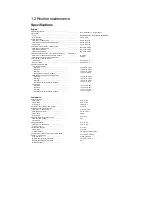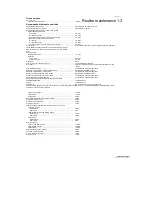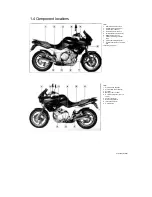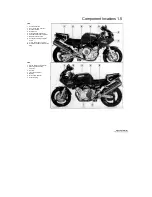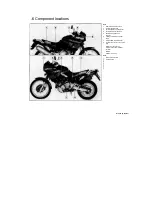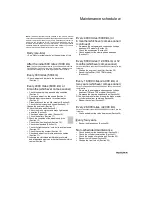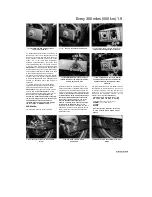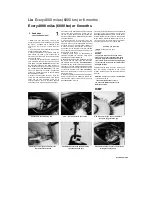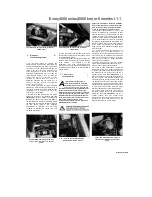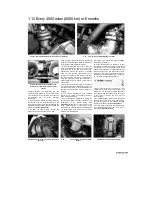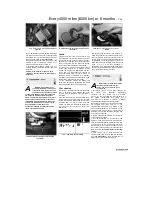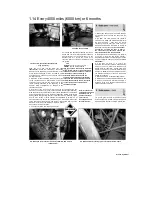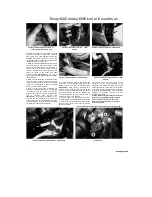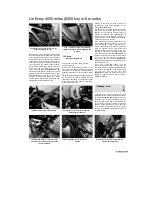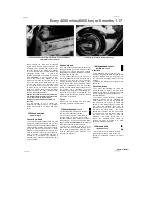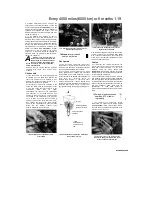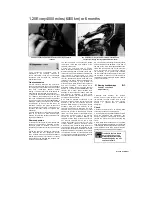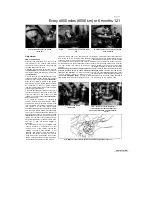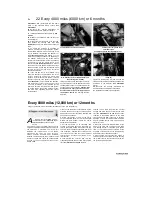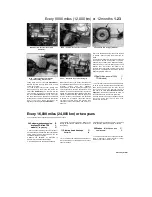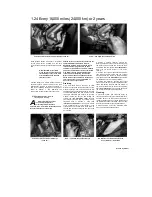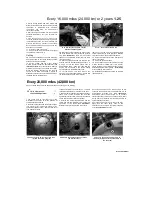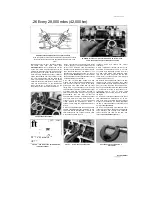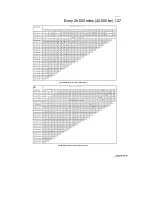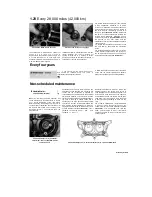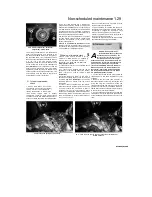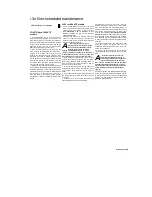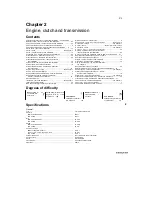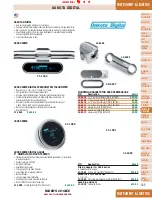
Lie Every 4000 miles (6000 km) or 6 months
9.8a Slacken the locknut (A) and turn the
pushrod using the hex (B)
...
8
Check the position of the brake pedal. Yamaha
recommend the distance between the top of the
end of the brake pedal and the top of the rider's
footrest should be as specified at the beginning
of the Chapter. If the pedal height is incorrect, or
if the rider's preference is different, slacken the
clevis locknut on the master cylinder pushrod,
then turn the pushrod using a spanner on the hex
at the top of the rod until the pedal is at the
correct or desired height
(see illustration).
After
adjustment check that the pushrod end is visible
in the hole in the clevis (TDM and TRX models)
(see illustration)
or below the clevis nut (XTZ
models). On completion tighten the locknut
securely. Adjust the rear brake light switch after
adjusting the pedal height (see Step 5).
9.8b
...
making sure the rod end is still
visible in the hole (arrowed) (TDM and TRX
models)
10 Clutch
-
check and adjustment
1
Check that the clutch cable operates
smoothly and easily.
2 If the clutch lever operation is heavy or stiff,
remove the cable (see Chapter 2) and lubricate it
(see Section 18). If the cable is still stiff, renew it.
Install the lubricated or new cable (see Chapter
2).
3 With the cable operating smoothly, check that
the clutch lever is correctly adjusted. Periodic
adjustment is necessary to compensate for wear
in the clutch plates and stretch of the cable.
Check that the amount of
freeplay at the clutch lever end is within the
specifications listed at the beginning of the
Chapter
(see illustration).
4
If adjustment is required, loosen the adjuster
lockring at the top of the cable and turn the
adjuster in or out until the required amount of
freeplay is obtained
(see illustration).
To
increase freeplay, turn the adjuster clockwise. To
reduce freeplay, turn the adjuster anti-clockwise.
Tighten the locking ring securely.
5 On TRX, XTZ and 1996-on TDM models, if all
the adjustment has been taken up at the lever,
reset the adjuster to give a large amount of
freeplay, then set the correct amount of freeplay
using the adjuster nuts on each end of the
threaded section in the cable bracket on the right-
hand side of the engine. On TRX models, first
remove the adjuster cover
(see iliustration).
To
reduce freeplay, slacken the rear nut and tighten
the front nut until the freeplay is as specified,
then tighten the rear nut
(see illustrations).
Subsequent adjustments can now be made using
the lever adjuster only.
6 On 1991 to 1995 TDM models, if all the
adjustment has been taken up at the lever, set
the correct amount of freeplay using the adjuster
in the cable - the adjuster is positioned a short
way down the cable from the lever
(see
illustration).
Slacken the locknut and turn the
adjuster as required until the correct amount of
freeplay is obtained.
10.3 Measuring clutch cable freeplay
10.4 Slacken the lockring (A) and turn the
adjuster (B) as required
1
TDM and TRX models are fitted with a sealed
(maintenance-free) battery, and therefore require
no maintenance.
Note:
Do
not attempt to remove
the battery caps to check the electrolyte level or
battery specific gravity. Removal will damage the
caps, resulting in electrolyte leakage and battery
damage.
All that should be done is to check that
its terminals are clean and tight and that the
casing is not damaged or leaking. See Chapter 9
for further details.
10.5a On TRX models, remove the cover
and adjust the cable as described using
the nuts (arrowed)
10.5b Cable adjuster nuts (arrowed) -
models
10.6 Slacken the locknut (A) and turn the
adjuster (B) as required
Scaned by Stalker
I

